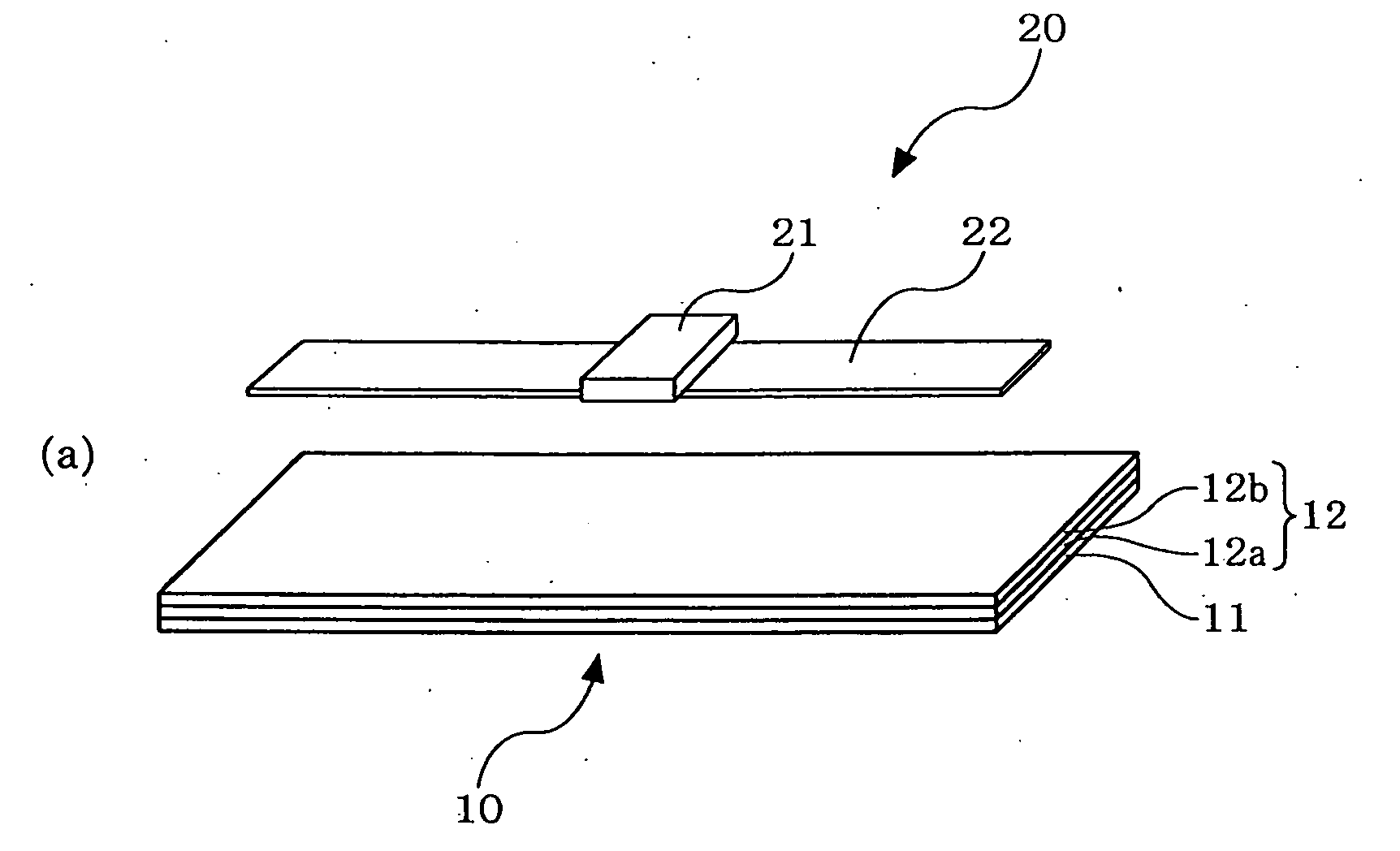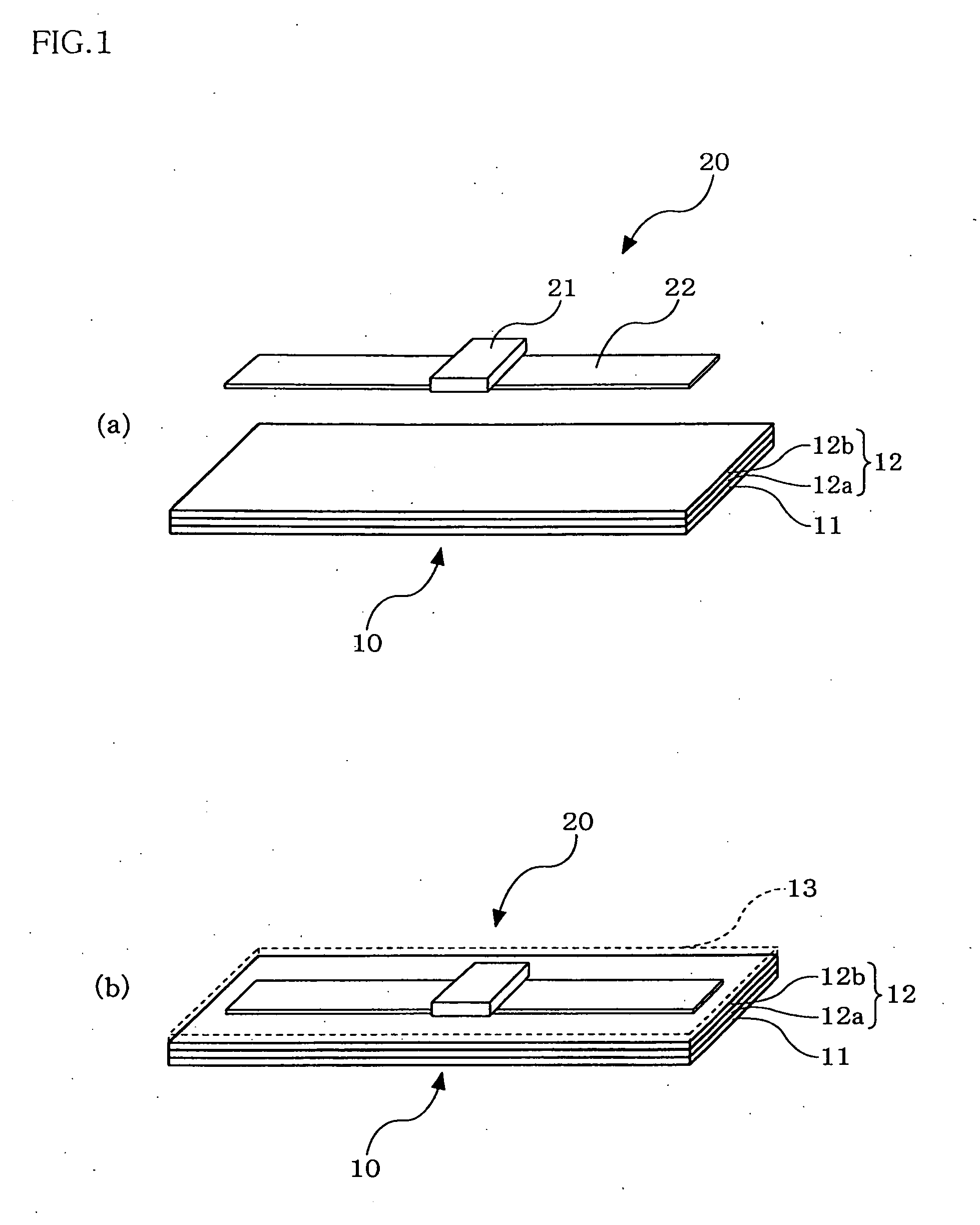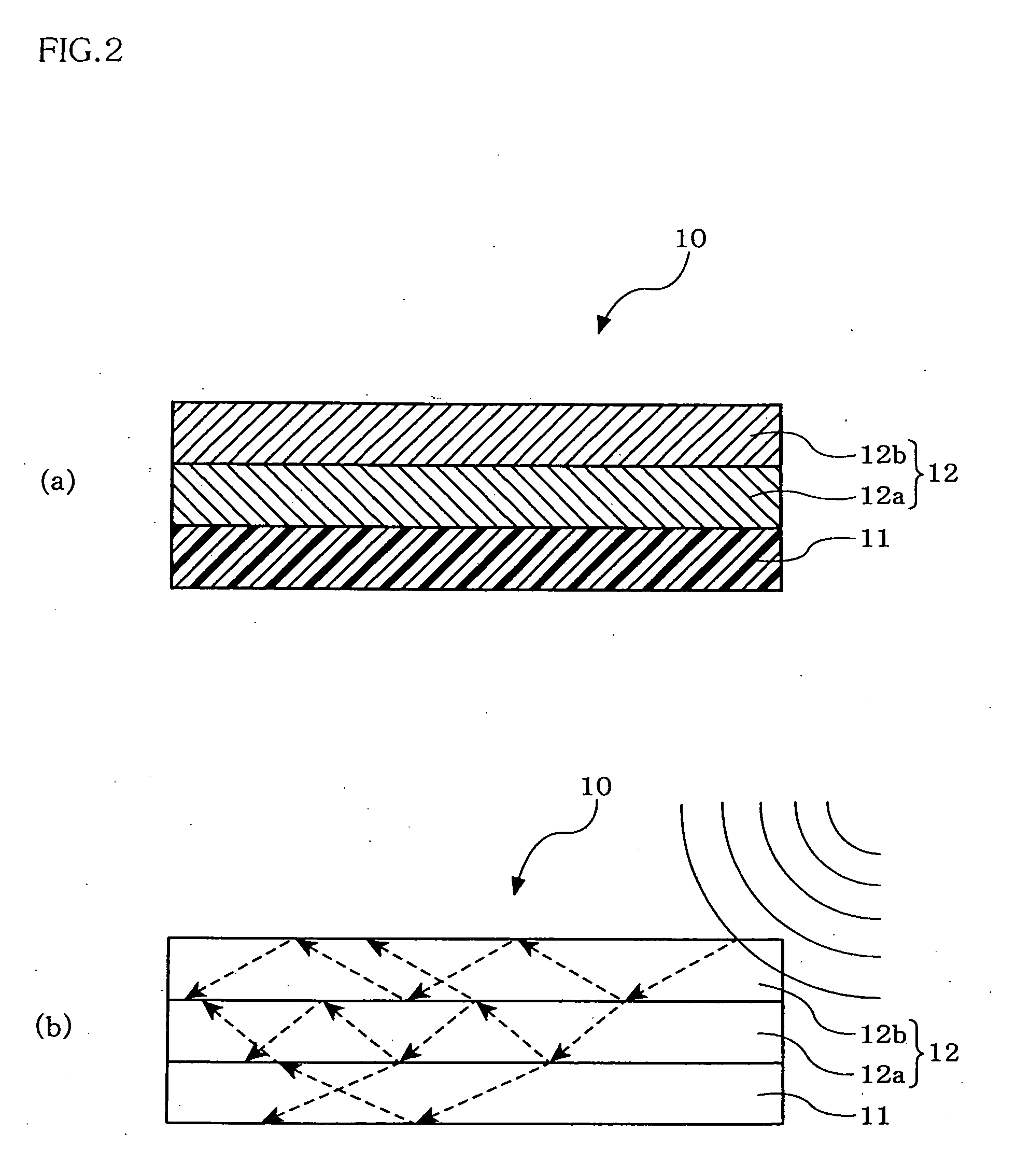Rfid Tag Substrate For Metal Component
a technology of rfid tags and substrates, applied in the field of rfid tags, can solve the problems of inability to give sufficient information, inability to read, and fixed limits as means of indicating and recognizing commodity information, so as to reduce the size of the main body of the tag, avoid the influence of metals on communication characteristics, and ensure the length of the antenna
- Summary
- Abstract
- Description
- Claims
- Application Information
AI Technical Summary
Benefits of technology
Problems solved by technology
Method used
Image
Examples
first embodiment
[0206]As a first embodiment according to the present invention, a preferred embodiment of an RFID tag substrate and an RFID tag including this RFID tag substrate according to the present invention will now be explained with reference to FIGS. 1 to 12.
[RFID Tag Substrate]
[0207]FIG. 1 are primary part perspective views schematically showing an RFID tag substrate according to an embodiment of the present invention, wherein (a) shows a state before an RFID tag is mounted and (b) shows a state where the RFID tag is mounted.
[0208]As shown in the drawings, an RFID tag substrate 10 according to this embodiment is a substrate that has an RFID tag 20 mounted thereon to constitute a part of the tag, and the RFID tag 20 that performs wireless communication with a reader / writer (not shown) is disposed at a predetermined position on a substrate surface.
[0209]Specifically, the RFID tag substrate 10 includes a substrate layer 11 and a functional layer 12, the RFID tag 20 including an IC chip 21 and...
example 2
[0357]A coating material obtained by mixing 350 parts by weight of an Al powder (an average particle diameter: 9.5 μm, an aspect ratio: 67.8) in 100 parts by weight of a resin component in a polyurethane-based binder (manufactured by Nippon Polyurethane Industry Co., Ltd.) was applied to a PET film having a thickness of 12 μm, and this structure was dried (three minutes in an oven at 130° C.) to manufacture a substrate. A thickness of the coating film was 30 μm.
[0358]A dielectric constant and a permeability of the coating film were substantially equal to those in Example 1.
[0359]As a result of conducting the same communication test as Example 1, a communication distance was 98 mm when a substrate lamination thickness was 0.94 mm.
example 3
[0360]An RFID tag (a coating film thickness: 50 μm, a lamination thickness: 0.92 mm, an operating frequency: 2.45 GHz) manufactured like Example 1 was attached to a side wall of a PET bottle filled with 500 ml of water to execute a communication test. As a result, a communication distance was 90 mm, and good communication characteristics were obtained without being affected by contents.
PUM
 Login to View More
Login to View More Abstract
Description
Claims
Application Information
 Login to View More
Login to View More - R&D
- Intellectual Property
- Life Sciences
- Materials
- Tech Scout
- Unparalleled Data Quality
- Higher Quality Content
- 60% Fewer Hallucinations
Browse by: Latest US Patents, China's latest patents, Technical Efficacy Thesaurus, Application Domain, Technology Topic, Popular Technical Reports.
© 2025 PatSnap. All rights reserved.Legal|Privacy policy|Modern Slavery Act Transparency Statement|Sitemap|About US| Contact US: help@patsnap.com



